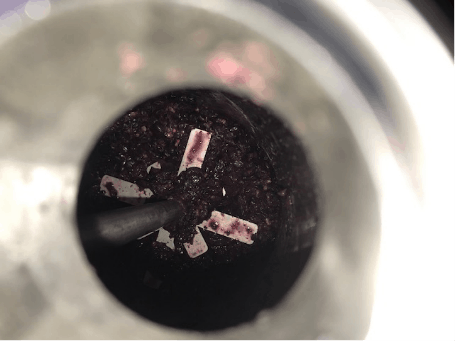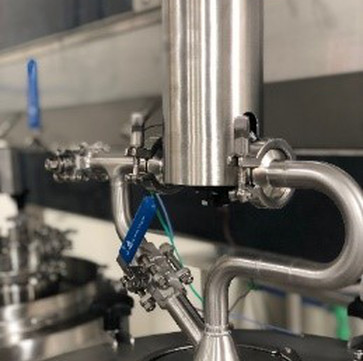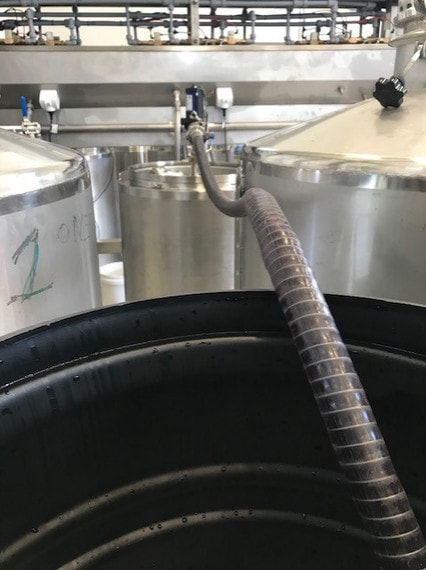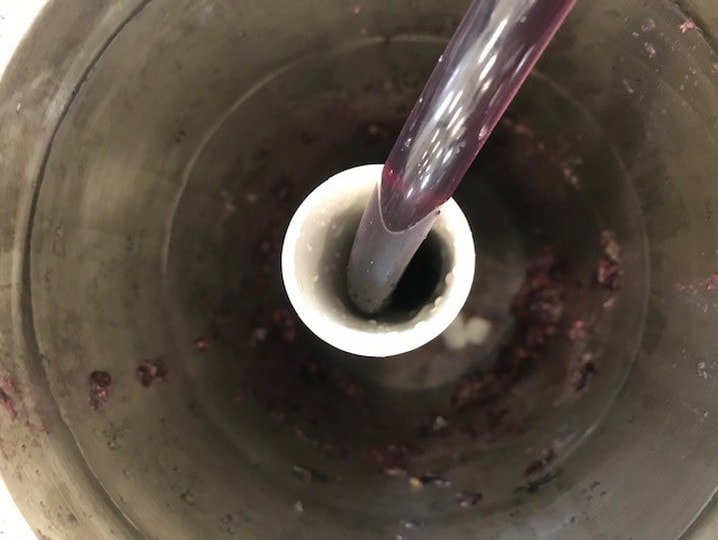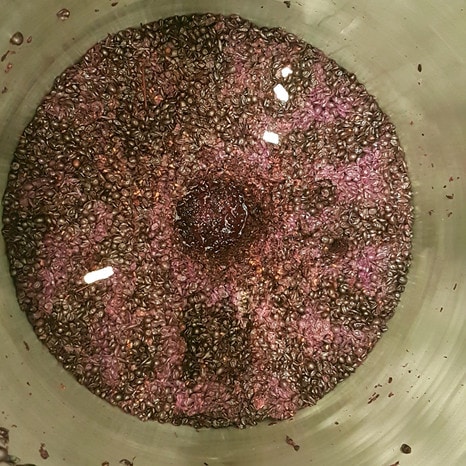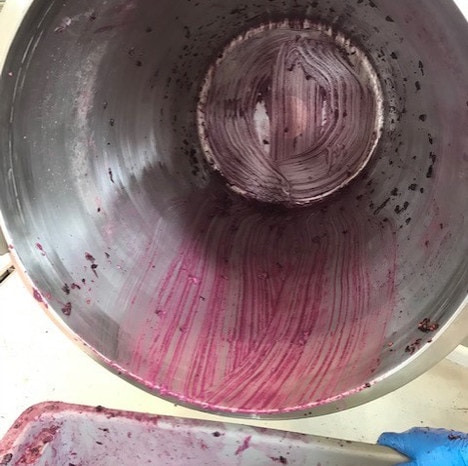After the excitement of receiving the first fruit into the winery, a quieter few days followed with the tanks chilling out at room-temperature (18 degrees) waiting to kick into fermentation. Tanks went through spontaneous fermentation without any additions and received the same cap-management programme as the wines at Pernod Ricard.
Images from Left to Right: Vilma plunging a 17L tank; Internal plunger of a 17L tank; Pumpover unit of the 200L tanks
During fermentation the 200L tanks received a pump-over with their automated pump-over units, the 17L tanks a plunge with their internal plunger set-up and Plant and Food’s 2L tubes were inverted. In true Pinot Noir fashion, once ferment started it went hot and fast with confirmation of dryness received 6 days after the initial brix-drop for the 200L tanks and 8 days after the initial brix-drop for the 17L tanks.
Images Top Left to Right:Draining a 200L tank using the pump-over unit; Cleaning a pump-over unit
Images Bottom Left to Right: Carbon Dioxide cover when draining 200L tank; Draining set-up of a 17L tank
We drained, dug-out and pressed our tanks the same day as Pernod-Ricard pressed their wines, the overall time on skins being 20 days. Pressing was extremely hands on – each wine was kept separate, giving a total of 14 individual wines to be pressed in the one day. As it was the first time we had emptied the different sized vessels, it took a bit of time setting up and optimising procedures. Pressing went on late into the night, but we got there in the end and were extremely happy with how everything went.
Images Left to Right: 200L tank after being drained; Custom-built tank lifter; Tank after dig-out
The following day the team got the chance to taste samples of the individual wines and were very pleased with how they were looking from the different sized vessels. The next step in the trial is sending the wine through malolactic fermentation (MLF), so again following Pernod-Ricard’s timing and procedures the wines were inoculated for MLF. As the temperature drops outside, the wine is safely tucked away in the warm room of the winery, ticking away through MLF!


